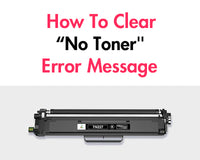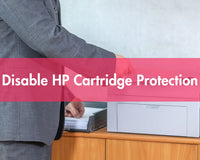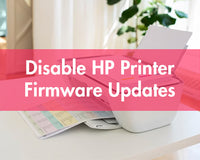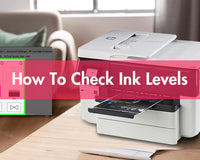Whether you're sending invitations, organizing your home office, or running a small business, printing labels can streamline your workflow and enhance your professionalism. Microsoft Word is a program most people already have installed on their computers, and it provides a powerful set of tools for designing and printing labels of all kinds. Best of all, you don't have to invest in specialized software. In this blog, we'll walk you through printing labels using Microsoft Word from start to finish.
1. Gather Your Materials
Before diving into Word, it's important to gather everything you need. You will need the following:
- A computer with Microsoft Word installed
- A printer (inkjet or laser, depending on your label paper)
- Label sheets (common brands include Avery, SheetLabels, and OnlineLabels)
- Optional: An Excel spreadsheet if you're planning to print variable data like names and addresses
2. Understand Label Types and Sizes
Not all labels are designed the same. From return address labels to shipping labels, the size and layout of each label sheet can vary greatly. It's important to use a label template in Word that exactly matches the layout of your label sheet.
Most label packages include a product number (such as Avery 5160). This number corresponds to a preset layout in Word. If you're unsure of your label size, measure the label size and count how many labels are on each sheet so you can match it to a template.
Understanding label formats ensures that what you design on screen matches your printed output perfectly. Now, let's look at how to choose the right template in Microsoft Word.
3. Choose the Right Label Template in Word
With Microsoft Word, you can easily create the correct label layout.
- Open Word and click on the "Mailings" tab.
- Select "Labels" from the toolbar.
- In the new window, click on "Options."
- Choose your label vendor (e.g., Avery US Letter).
- Scroll through the list and select your product number.
- Click "OK," then "New Document" to open a full-page template.
This creates a grid layout that matches your label sheets exactly. You can now type directly into each label cell, ensuring perfect alignment. With your template open, it's time to start designing.
4. Customize the Label Design
Formatting Your Labels
Now it's time to get creative. Word lets you format your labels just like any other document. You can change the font, adjust the alignment, and even add a picture or logo.
Making Gridlines Visible
To make the grid lines visible:
- Click inside one of the label cells.
- Go to the "Layout" tab under "Table Tools."
- Click "View Gridlines."
This helps ensure your text and graphics align correctly. If you want to print the same label multiple times (for example, a return address), just copy and paste the content into each cell.
Want to reuse your design later? Save your document as a Word template. But what if you want each label to contain different information? That's where Mail Merge comes in handy.
5. Use Mail Merge for Personalized Labels
Mail Merge is a powerful feature in Word that lets you print unique labels for a list of people or addresses. This feature is great for mailing campaigns, name tags, or product labels.
- Start with your label template open.
- Go to "Mailings" > "Start Mail Merge" > "Labels."
- Select your label vendor and product number again.
- Click "Select Recipients" and choose your data source (Excel file or Outlook contacts).
- Insert merge fields into your first label (e.g., First Name, Last Name, Address).
- Click "Update Labels" to populate all cells.
- Click "Preview Results" to check alignment.
- Finish with "Finish & Merge" > "Print Documents."
With Mail Merge, Word populates each label based on your data file, saving you hours of manual entry. It’s a good idea to test your layout before printing all your labels.
6. Print a Test Page
Always print a test page on plain paper before using actual label stock. This will verify alignment and avoid wasting material.
Place the printed test page behind a blank label stock and hold it up to a light source. This will allow you to check that the text within each label is aligned.
If adjustments are needed, go back and adjust margins, font size, or field spacing. Once everything looks correct, you are ready to go.
7. Final Printing Instructions
How you print labels will vary slightly depending on your printer type. Here are some tips:
Load the label sheet according to your printer manual (face up or face down)
Go to "File" and click "Print." Under "Settings," make sure you have the correct paper size and orientation selected.
Also, use the highest print quality setting for best results.
Print one sheet first to make sure everything looks correct. If it does, you can continue with the rest.
8. Save and Reuse Label Templates
If you plan to use the same label format regularly, keep a template to save time:
- Save your document as a .dotx Word Template
- Label the file clearly (e.g., "Holiday Address Labels")
- Reuse the file each time you need that label layout
Check out the video for quicker details.
Troubleshooting Common Problems
Here are some common problems and how to fix them:
Misaligned text: Double-check you're using the correct template and that your printer settings match the label paper size.
Labels printing off-center: Make sure you aren't using any scaling settings (like "Fit to Page") in the print dialog.
Blank labels in Mail Merge: Check your data source for empty rows or fields.
Smudging or poor quality: Use the correct label type for your printer (inkjet vs. laser) and allow ink to dry before handling.
Alternatives and Extras
While Word is powerful, you may find even more flexibility with other tools:
- Label vendor software: Avery, OnlineLabels, and others offer free software and Word-compatible templates.
- Google Docs + Add-ons: If you're a Google user, tools like "Create & Print Labels" can help.
- Professional design software: For intricate designs, try Adobe Illustrator or Canva.
These tools can offer more customization, but for most users, Word strikes the right balance of power and simplicity.
Final Thoughts
Printing labels in Microsoft Word is easier than you think. Just choose the right template, do some customization, and run a test or two, and you'll be creating beautiful, professional labels at home or in the office. Whether you're labeling envelopes for your holiday mailing or organizing documents at your workspace, Word has all the tools you need. Open Word, grab your label sheets, and give it a try. With a little practice, you'll be printing perfect labels in no time.
